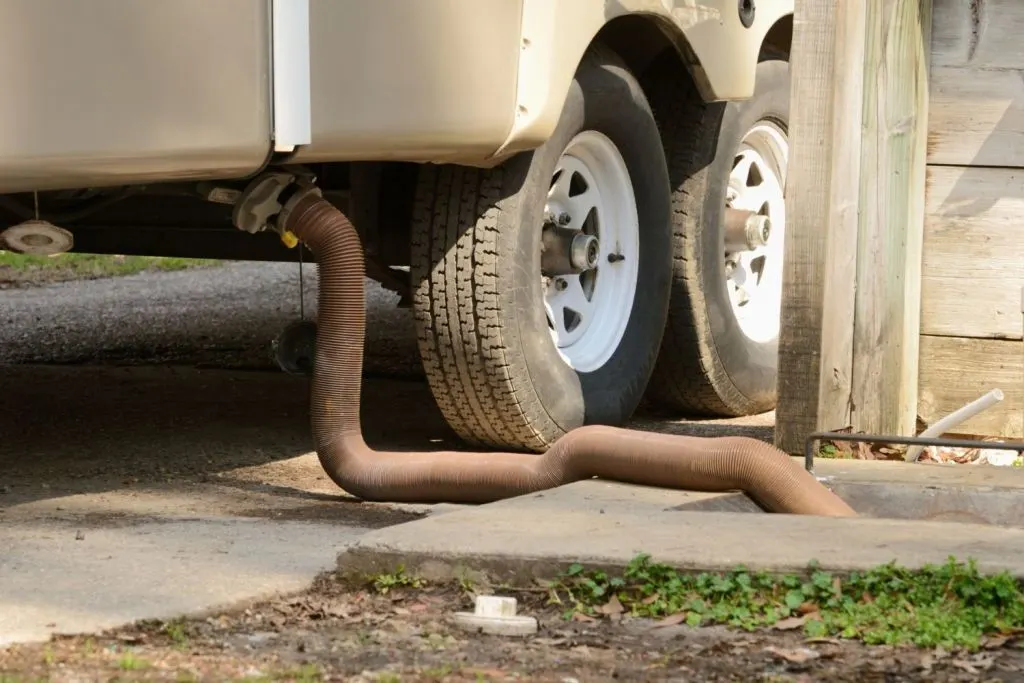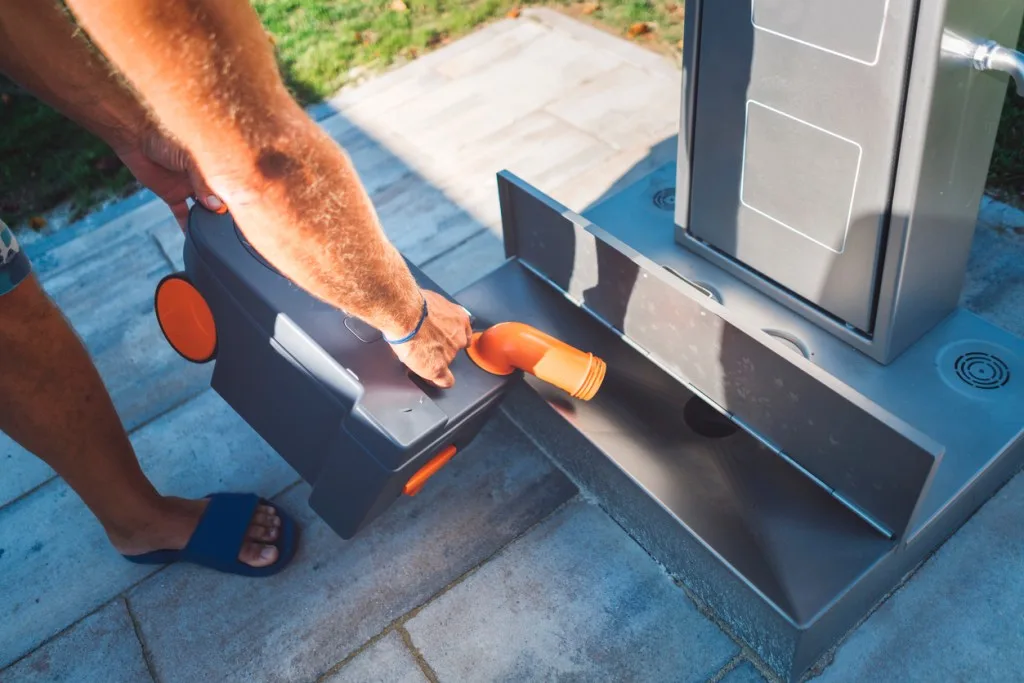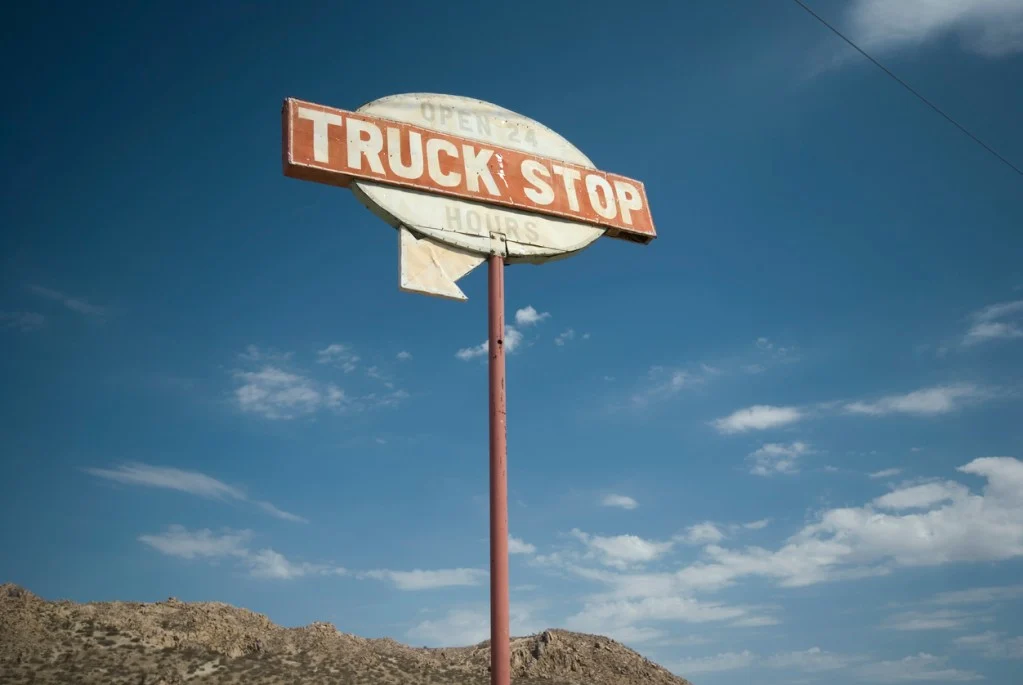One of the unpleasant responsibilities of owning an RV is dealing with wastewater. Whether it’s water from cleaning the dishes, taking a shower, or flushing the toilet, none of it is lovely.
The smells and sights of emptying your tanks are just part of your duty.
To make this job easier, let’s look at five places to dump your tanks. This way, you won’t have to worry about looking for a place when pulling on those rubber gloves. Let’s dive in!
What Is Black Water in An RV?
There are two tanks in an RV that collect water. One is the gray tank. This tank holds the wastewater from sinks and showers. The second one is the black tank. This tank has all the waste from the toilet. The main difference between the two tanks is what they collect: black water is your toilet waste.
As an RVer, you are responsible for maintaining and emptying these tanks frequently. How often you empty the tanks is different from RVer to RVer. A family of eight may dump the tanks every other day. A couple may only dump the tanks once a month.
If you never wash dishes or use the bathhouse to shower, you can go a while without needing to empty your gray and black tanks.

How Do I Get Rid Of Black Water in My RV?
When it’s time to empty your black tank, you must do so correctly. You cannot open the valve and let toilet waste spew all over the ground. It is unsanitary and could be dangerous, as waste carries disease.
If you have full hookups at a campground, emptying the tanks is easy. Go outside, pull the black tank valve first and let all the waste drain into the sewer system. Once the black water runs out, close that valve and open the gray tank valve. The gray water will flush out any remaining toilet waste stuck in your sewer hose. Then you close that valve and head inside.
If you don’t have access to a sewer hook-up, you’ll need to find a dump station or call a honey wagon. A dump station is usually set up at campgrounds as you leave the property. Campgrounds that don’t offer sewer hook-ups typically have a dump station for guests. The process is the same. You hook up your sewer hose, empty the back tank, empty the gray tank, put up the sewer hose, and head out.
If you need to empty your tanks but aren’t planning on leaving for a couple of weeks, you can call a honey wagon service. Sometimes campgrounds offer this amenity. A honey wagon is a truck that pulls a trailer holding wastewater. The honey wagon driver will hook up the sewer hose to your valves and connect it to their truck where the waste will go. This service is usually not free but isn’t very expensive.
You can also buy a portable waste tank connected to your sewer hose that operates like a honey wagon. You’ll take the waste tank to the dump station and empty it there. It’s much easier than driving your rig to the dump station.

5 Easy Places to Dump Your RV Black Water
Sometimes access to a dump station isn’t available. Maybe you’re boondocking, and you need to find a place to dump your gray and black water. Let’s look at five accessible areas that provide this service for RVers.
1. Campgrounds
Even if you’re not staying at a campground, you can call the office and ask about using their dump station. Sometimes they’ll charge a fee, but it’s usually not expensive.
It’s worth it to find a campground nearby, so you don’t have to travel with hundreds of pounds of wastewater. One disadvantage is that sometimes the nearest campground is off the beaten path and not along your route.
2. Gas Stations or Truck Stops
Sometimes gas stations or truck stops will also provide a dump station. Look for signs that show an RV with a down arrow coming underneath the rig. These dump stations are not always the cleanest because many people use them.
You should always use gloves when dumping your tanks. However, the advantage to using a gas station is that it’s right off the interstate and easily accessible.

3. Rest Stops
Similar to truck stops, rest stops are easily accessible and are usually big rig friendly. Not all rest stops will have a dump station, however, so you’ll want to have a backup plan or call ahead.
Some rest stops have staff to answer the telephone while others do not. RV travel apps can also help you locate rest stops that provide a dump station.
4. RV Dealerships
If you’re near an RV dealership, you can call and ask if it has a dump station. Most will because they should inspect everything to ensure it works before selling it to a customer. An RV dealership will likely have potable water and a dump station to run water through the lines and ensure everything operates correctly.
If you call and ask permission, this is another location to pull in to empty your tanks. However, like a campground, it may not be on your route. You should be able to get in and get out quickly, but you may spend extra time driving to get there.
5. Any Approved Municipal Sewer System
Sometimes you can wait until you get back home to empty your tanks. Maybe you went out for a weekend of dry camping, so your tanks aren’t full and adding a lot of weight to your RV. If you’re connected to a municipal water supply, you’ll first have to check with your local government to see if it’s legal to dump into the sewer system.
Call your city or county office. If they permit you, find the cleanout or a capped pipe poking out of the ground, and connect your sewer hose like you would at a dump station.
Pro Tip: Here’s info about dumping your RV at home.
Is There An App to Find RV Dump Stations?
Several apps will help you locate RV dump stations. RVDumps.com, SaniDumps.com, AllStays, and Campendium are great resources to bookmark or download.
You can filter, search by location, and look at your route to find the best spot to pull off and dump your tanks.
How Often Should I Dump My Black Water Tank?
There isn’t a science or formula to dumping your tanks. Some RVers can go over a week without emptying their tanks because they don’t use a lot of water. If you’re gone every day, perhaps to a work site or hiking in a National Park, you won’t use your toilet as often as someone who works remotely and stays at the RV all day long.
Depending on your camping style and the number of people in your family, you may go five or six days without needing to dump, or you may have to dump every other day.
When you empty your tanks, what’s your go-to location? Do you typically stay at full hook-up campsites, or are you a hard-core dry camper who is always looking for nearby dump stations?
Discover the Best Free Camping Across the USA
To be honest with you, we hate paying for camping. There are so many free campsites in America (with complete privacy).
You should give it a try!
As a matter of fact, these free campsites are yours. Every time you pay federal taxes, you’re contributing to these lands.
Become a FREE CAMPING INSIDER and join the 100,000 campers who love to score the best site!
We’ll send you the 50 Best Free Campsites in the USA (one per state). Access the list by submitting your email below: